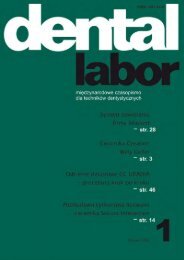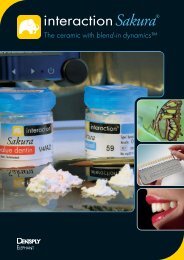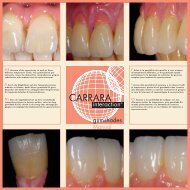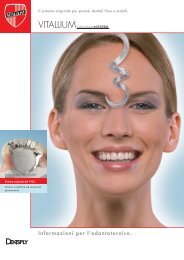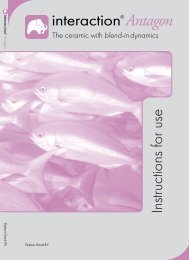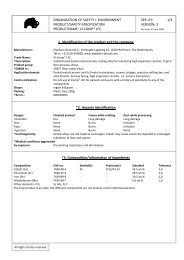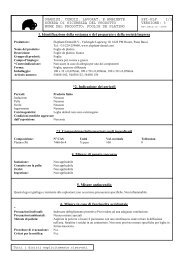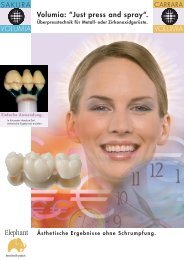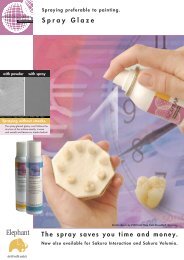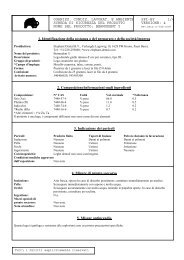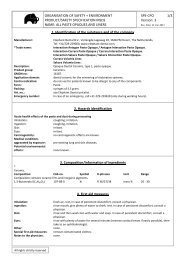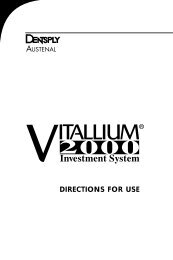Interaction Carrara - Elephant Dental
Interaction Carrara - Elephant Dental
Interaction Carrara - Elephant Dental
Create successful ePaper yourself
Turn your PDF publications into a flip-book with our unique Google optimized e-Paper software.
<strong>Interaction</strong> <strong>Carrara</strong>.<br />
Your best choice<br />
Besides the exceptional ease of use that the blend-in dynamics provide from an aesthetic point<br />
of view, there are many aspects that make the <strong>Interaction</strong> ceramic easy to work with too:<br />
10<br />
Faster result.<br />
<strong>Interaction</strong> ceramic is form stable for at least five firing stages. After the<br />
normal first sinter shrinkage, the material is form stable, which means<br />
that fewer corrections will be necessary during the rest of the process.<br />
Besides a homogeneous firing result, the unique particle build-up<br />
also results in a reduced risk of breakage and cracks. An additional<br />
advantage of the particle size build-up chosen is that the ceramic is<br />
stable in wet conditions too, which makes the material pleasant and<br />
easy to work with.<br />
Simplicity of use.<br />
The <strong>Interaction</strong> assortment for the various sub-structure materials are<br />
identical in terms of build-up. Experience gained with the material can<br />
be applied again and again, regardless of the sub-structure used.<br />
Added to this, the names used for the materials often indicate their<br />
function within the build-up.<br />
Healthy elements retained.<br />
The basic material (the frits) for <strong>Interaction</strong> ceramic is produced using<br />
a hydrothermal production process 1) . As a result, a hydroxil effect is<br />
ultimately achieved in the mouth. Upon first contact with the saliva, the<br />
crown reacts by creating a smooth, softer outer layer, resulting in a<br />
reduced risk of antagonist abrasion.<br />
Trust.<br />
<strong>Interaction</strong> ceramics always consist of two components (so-called frits)<br />
made from 100% natural feldspar material. During firing, the glass frit<br />
changes to a liquid form before the leucite frit does. As a result, the<br />
sub-structure is ‘wetted’ better, which results in better adhesion. In this<br />
way, the risk of cracks or material breaking away is kept to a minimum.<br />
This also results in a demonstrably better bond for both precious metal<br />
sub-structures and cobalt-chrome substructures.<br />
Economic advantage.<br />
The complete range consists of relatively few different materials, yet it<br />
is still possible to produce any of the various restorations from them. As<br />
a result, there is a smaller risk that a high level of unusable materials will<br />
be accumulated in the laboratory.<br />
History since 1984.<br />
<strong>Interaction</strong> <strong>Carrara</strong> was developed from the FlexoCeram system,<br />
which was introduced in 1984. The basis for the recipe used for<br />
the material has remained virtually unchanged. This means that by<br />
choosing <strong>Interaction</strong>, you are opting for a material that has already<br />
been used in millions of restorations over the last 25 years.<br />
1) See the reading list for details of the hydrothermal production process



